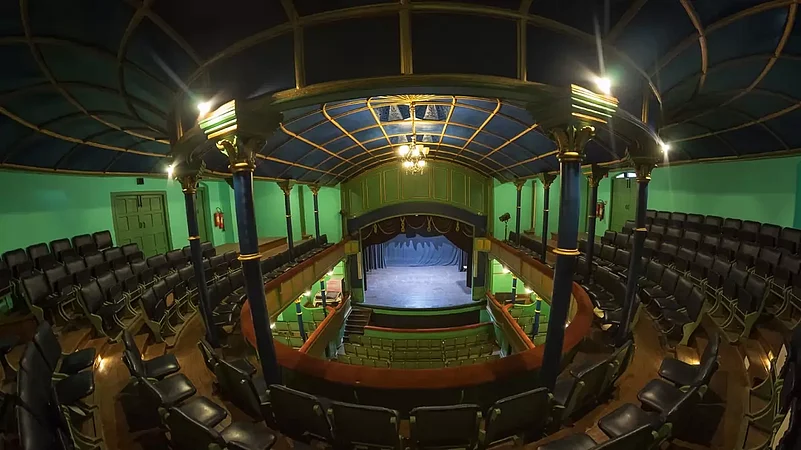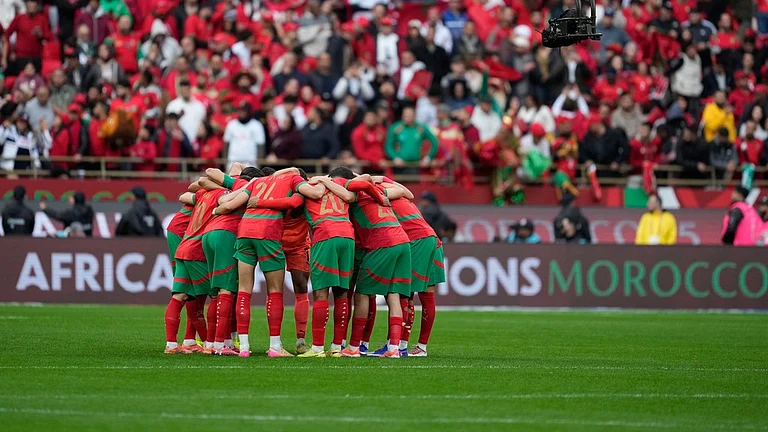Shimla’s iconic Gaiety Theatre, designed by English architect Henry Irwin and built in 1887, is no less than a nostalgic monument for Indian theatre lovers in the erstwhile Summer Capital of British Raj. Having hosted greats like Nobel Laureate Rudyard Kipling and Shashi Kapoor in the past, the theatre continues to be a natural setting for new productions today and has also emerged as a venue for shooting songs and hosting literary events.
Noted film and theatre artist Narindra Sachar, who arrived in Shimla to stage the 14th show of ‘Jaam-e-Shahadat’, an adaptation of Saadat Hasan Manto’s story ‘Shahid-Saaz’, at the Gaiety Theatre, looked mesmerised by the ambience of wood and cobblestone complex. For the Mumbai-based actor, the Gaiety turned out to be a natural setting for the new stage production.
Sachar as a young graduate of the Panjab University’s Department of Indian Theatre has earlier associated with ‘Himachal ki Kahani’, a theatrical adaptation of Himachal Pradesh’s story of coming into being in 1988.
“The creative line of ‘Jaam-e-Shahadat’ (The Glass of Martyrdom) and its original story, its sharp satirical look to introduce the sage of post-Partition to the audience, perfectly suited the natural setting of the Gaiety. This was one of my most satisfying and successful performances among those done in Mumbai, Bangalore, Ahmedabad, Mysore, and Dharwad,” says Sachar, a Jammu-born actor.
Grandeur of Gaiety and Mumbai
The Gaiety’s grandeur has now reached millions with Arijit Singh’s song ‘Ho Mujhe Chod kar Jo Tum Jaoge Pachtaoge’ which was shot in the Gothic settings of the Gaiety Theatre along with other locations around the Shimla’s Mall. It was directed by Arvindr Khaira and featured stars Vicky Kaushal and Nora Fatehi.
The song ‘O Aasman Wale’, penned by Manoj Muntashir and featuring model Neha Khan, was also shot at the Gaiety along with other British landmarks in Shimla, says the theatre’s manager Sudharshan Sharma.
The iconic song ‘Main Nikla Gaddi Leke’ of ‘Gadar’ (2001) was also shot at the Gaiety Theatre.
The Gaiety Theatre, one of India’s oldest cultural centres, is also compared to London’s Royal Albert Hall. Personalities like Nobel Laureate Rudyard Kipling, Prithviraj Kapoor, Balraj Sahni, Shashi Kapoor, Jennifer Kendall, Raj Babbar, Mohan Rakesh, Anupam Kher, and Naseeruddin Shah have performed here.
More recently, legendary writer-director Gulzar also attended a session of the International Literary Festival at the theatre. The session was designed as filmmaker Vishal Bhardwaj’s conversation with Gulzar on the topic of ‘Literary Beauty in Film Songs’. In this, the songs composed by Gulzar were also sung by Vishal Bhardwaj and Indian Revenue Service (IRS) officer Nirupama Kotru, casting an incredible spell throughout the complex.
Gaiety’s manager Sharma tells Outlook, “Very soon, we will hit a double century of plays and other classical performances at Gaiety’s Gothic Hall alone since April 1, 2022 — after the Covid-19 period. Between April 1, 2022 and March 31, 2023, a total if 143 performances were successfully organised. This includes our in-house productions under the banner of the Gaiety Dramatic Society (GDS). The Gaiety has truly turned a new chapter in the recent cultural history of Shimla.”
The GDS is a brainchild of Indian Administrative Service (IAS) officer Rakesh Kanwar, who is currently serving as Secretary of the Department of Language, Art and Culture (LAC), which is the parent body of the Gaiety Theatre. Kanwar, known for his innovations, mostly stays away from the publicity but his work speaks volumes.
By the end of the year, the Gaiety Theatre will set a new record, says Kanwar.
Jaam-E-Shahadat
The play ‘Jaam-e-Shahadat’ explores the corruption of human values and morals during the turbulent times of the Partition of India when lakhs of people fled to Pakistan after abandoning everything in India.
“As Manto is known for giving a harsh and blunt account of the situation without trying to soften his characters, language, or realities on the ground, it narrates a story about a small-time corrupt businessman from Gujarat who moves to Pakistan. He exploits the situation and becomes a millionaire soon. Manto described the situation in a satirical manner to bring him his point,” says Sachar about the play.
The lead actor Sachar and acclaimed actor and writer Sanjeev Mehta who played Manto carried the entire play on their shoulders to a rapt audience.
Currently, ‘Lehron Ke Rajhans’ (The Swans of Waves), is on the floors of the GDS, which is the society’s seventh production. It is based on the work of Mohan Rakesh, the pioneer ‘Nai Kahani’ movement and revival of Hindi theatre. It’s an ancient Buddhist tale on the renunciation of Buddha and its aftereffects on his close family.


























